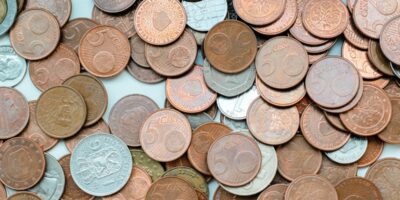Roosevelt Dime Mintages
Introduction to Roosevelt Dimes

The Roosevelt dime has been a cornerstone of American coinage since its introduction in 1946. Designed by John R. Sinnock, it honors President Franklin D. Roosevelt. It quickly became a staple of the U.S. monetary system. Understanding its mintages provides insight into American economic history and the evolving nature of coin production.
Early Mintages (1946 – 1964)
When the Roosevelt dime was first issued in 1946, it replaced the Mercury dime. Initial production volumes were significant, reflecting post-World War II economic recovery. In 1946 alone, the Philadelphia, Denver, and San Francisco mints collectively produced over 255 million dimes.
The early Roosevelt dimes from 1946 to 1964 were composed of 90% silver and 10% copper. The highest production year in this period was 1964 with over 2.2 billion coins minted. This spike was largely due to increasing demand and the impending shift to copper-nickel clad coinage.
- 1946: 255,250,000
- 1951: 276,367,000
- 1955 (low mintage): 27,450,000 (total for three mints)
- 1964: 2,286,877,245
Clad Composition Era (1965 – Present)
In 1965, the Coinage Act brought an end to silver dimes. Production shifted to a clad composition of copper sandwiched between layers of copper-nickel. This change marked a significant transformation in U.S. coinage, driven by rising silver prices.
The first clad coins were produced in large quantities to replace the hoarded silver coins. The mintages for the initial years were high. For example, the 1965 dime saw over 1.6 billion pieces minted. High production continued in the following years, reflecting the ongoing adjustments in the economy and monetary policy.
- 1965: 1,652,140,000
- 1970: 1,112,948,000
- 1980: 1,189,477,892
- 1990: 2,140,467,000
21st Century Mintages
The 21st century has seen varied mintage numbers for the Roosevelt dime. Economic factors and the introduction of electronic transactions have influenced coin production. The mintages have fluctuated significantly, reflecting changes in consumer habits and economic circumstances.
For instance, the year 2000 saw around 4.8 billion dimes minted. However, economic downturns and a shift towards digital payments led to lower numbers in subsequent years, with 2009 featuring drastically reduced figures.
- 2000: 4,818,000,000
- 2009: 146,000,000
- 2015: 2,874,000,000
- 2020: 2,776,000,000
Mint Marks and Special Issues
Mint marks on Roosevelt dimes denote the minting location. P represents Philadelphia, D stands for Denver, and S is for San Francisco. Uncirculated and proof versions are produced primarily for collectors. The San Francisco mint has specialized in proof coins, particularly since the 1968 revival of proof sets. These coins often have lower mintage numbers compared to their circulating counterparts.
Significant events also influence coin production. The U.S. Mint occasionally releases special issues to commemorate historical milestones. These commemorative coins often have specific mintages, and they cater to collectors and numismatists.
- 1996-W (50th Anniversary): 1,457,000
- 2015-S (proof): 920,780
- 2020-S (silver proof): 464,411
Conclusion
Roosevelt dimes, from their inception to the present, tell a story of changing economic needs and evolving minting technologies. Tracking their mintage offers valuable insights into U.S. history and numismatic trends. Each period reflects the broader context of the times, making these small coins a significant piece of American heritage.




Subscribe for Updates
Get the latest articles delivered to your inbox.
We respect your privacy. Unsubscribe anytime.